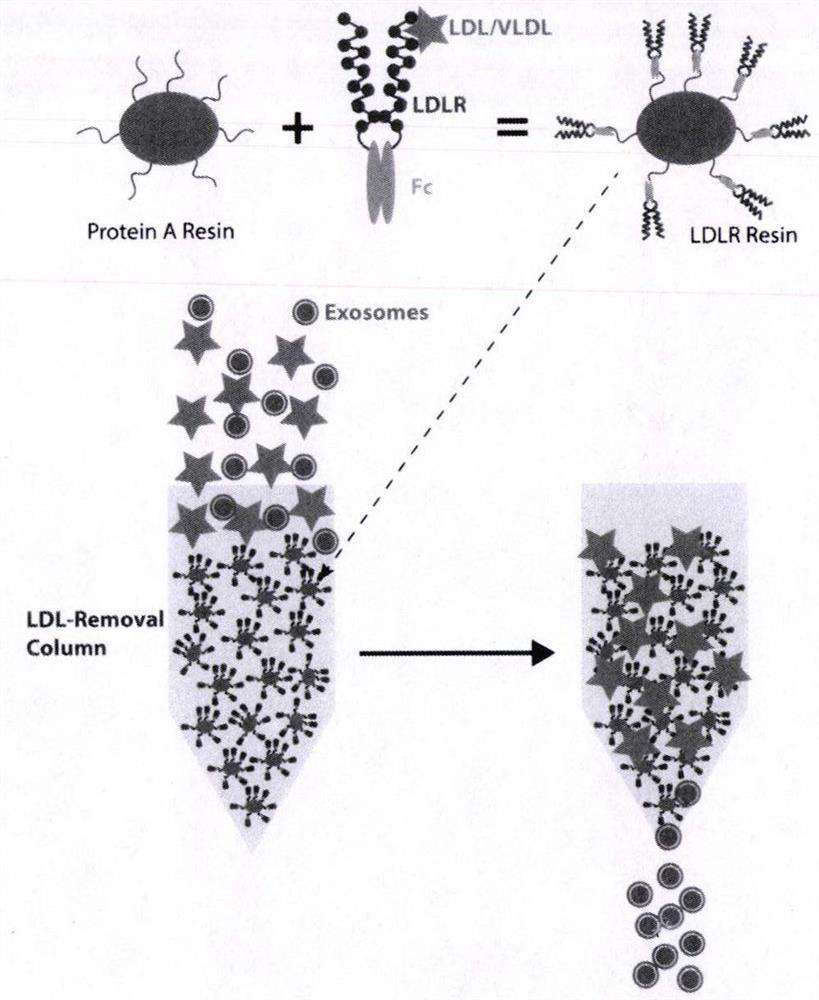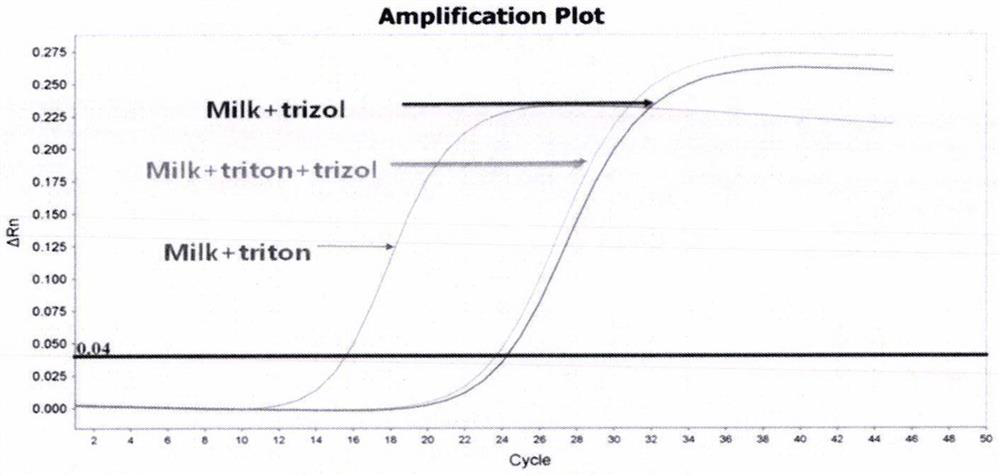Extraction method and application of exosome
An extraction method and exosome technology, applied in the field of exosome extraction, can solve the problems of low extraction purity, high cost, and long processing time
- Summary
- Abstract
- Description
- Claims
- Application Information
AI Technical Summary
Problems solved by technology
Method used
Image
Examples
Embodiment 1
[0069] Example 1 LDLR affinity chromatography pretreatment of samples
[0070] Take 400 μl of normal human serum / plasma (sodium citrate blood collection tube), and dilute it with PBS solution 1:1 for later use. Wash the LDLR column 3 times with its buffer solution, and let it fall by natural gravity. Add the reserve solution to the LDLR column several times in batches, drop by gravity, and collect the liquid after passing through the column. The schematic diagram of LDLR chromatography column processing samples is shown in the appendix figure 1 .
[0071] It is verified that the LDLR column has a certain ability to remove LDL protein, which can achieve the effect of removing lipoprotein and purifying exosomes. As the volume of the solution becomes larger after passing through the column, it is extremely important to select a subsequent enrichment method for exosomes. Concentrating the exosome solution can improve the detection sensitivity and facilitate subsequent downstrea...
Embodiment 2
[0072] The oxide enrichment concentration of embodiment 2 eluent
[0073] Take 8mg of oxide, add 200μl PBS solution to wash, spin for 10s, and discard the supernatant. Repeat this step twice. The oxides were formulated into a 0.05mg / μl suspension in advance and dispersed by ultrasonic for 1h. Since the initial serum volume is 400 μl, take 160 μl of the oxide suspension and centrifuge for 10 seconds, discard the supernatant, add PBS to wash twice, centrifuge and discard the supernatant.
[0074] Add the liquid after passing through the column to the oxide precipitate, mix well, and incubate with shaking for 30min. After the incubation, centrifuge for 10 seconds, discard the supernatant and add PBS solution to wash twice, then discard the supernatant immediately. Add PBS to mix and precipitate, which is the combination of exosomes and oxides.
Embodiment 3
[0075] Determination of the evaluation markers of the exosomes extracted in Example 3
[0076] 5S and U6 are excluded from the reference genes suggested by genomics. Based on genomic analysis, it is recommended to select as internal reference genes including miR-221, miR-128, miR-451, let-7a, miR-221, miR-16, miR -181c, miR-26a.
[0077] Therefore, based on the characteristics of high content and stable expression in exosomes, we currently select miR181a-5p as the quantitative standard of exosomes and the subsequent selection of internal reference genes. For the content of some miRNAs in human blood exosomes, see the attached figure 2 .
PUM
 Login to View More
Login to View More Abstract
Description
Claims
Application Information
 Login to View More
Login to View More - R&D
- Intellectual Property
- Life Sciences
- Materials
- Tech Scout
- Unparalleled Data Quality
- Higher Quality Content
- 60% Fewer Hallucinations
Browse by: Latest US Patents, China's latest patents, Technical Efficacy Thesaurus, Application Domain, Technology Topic, Popular Technical Reports.
© 2025 PatSnap. All rights reserved.Legal|Privacy policy|Modern Slavery Act Transparency Statement|Sitemap|About US| Contact US: help@patsnap.com



